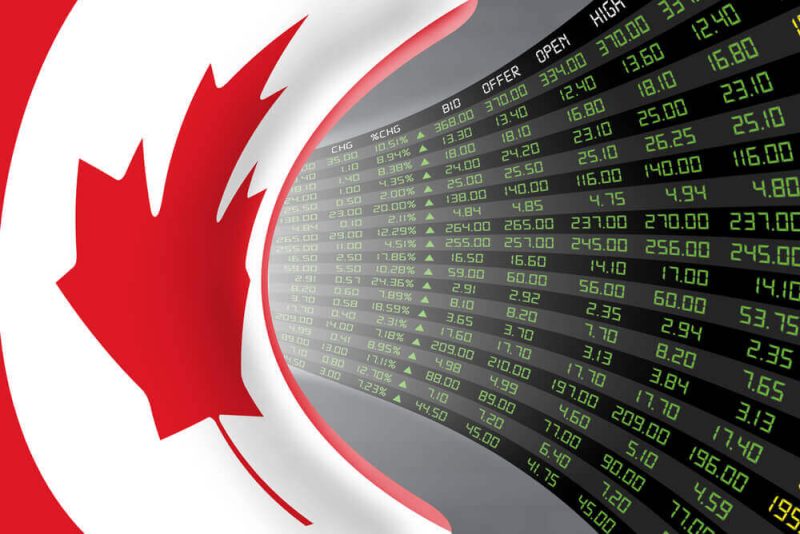Canadian Stocks Rise, Loonie Falls Post-Rate Cut
Quick Look:
Rate Cut Impact: Bank of Canada cut rates by 25 basis points to 4.75%, boosting stocks and bonds. Market Reaction: The S&P/TSX composite index rose 0.8% to 22,145.02, with all major sectors gaining. Loonie Decline: The Canadian dollar fell to a near two-week low, trading at 1.3690 to the U.S. dollar.Canadian stocks and bonds surged, and the loonie dipped to a near two-week low against the U.S. dollar. This significant move by Canada’s central bank, the first rate cut among G7 nations, has raised prospects for the country’s economic outlook. The Toronto Stock Exchange’s S&P/TSX composite index closed up 166.84 points, or 0.8%, at 22,145.02.
A Positive Development for Equities and Bonds
The Bank of Canada lowered its benchmark interest rate by 25 basis points to 4.75%. This marks its first rate cut in four years. Consequently, this decision is expected to ease financial pressures on highly indebted consumers. This could potentially boost spending and economic activity.
Additionally, Angelo Kourkafas, a senior investment strategist at Edward Jones, remarked, “It was clearly a positive development for equity markets and bonds.” He noted that it aligns with a soft landing scenario. The Bank of Canada is willing to start normalising policy while economic growth remains steady.
The rate cut positively impacted various sectors of the Toronto market. All ten major sectors moved higher, with interest rate-sensitive real estate and resource stocks leading the gains, buoyed by rising commodity prices. Additionally, the Canadian services sector saw growth in May for the first time in a year. Firms experienced increased new business and accelerated hiring.
Interest Rate Divergence and the Loonie’s Decline
The Bank of Canada’s decision also influenced the bond market. The Canadian 2-year yield dropped as much as 12.7 basis points to 3.929%, its lowest level since February 1. This decline reflects investor expectations that the Bank of Canada will continue to lower rates in the coming months. Swap market data indicates that the central bank is anticipated to cut a total of 77 basis points this year, compared to the 49 basis points of easing expected from the Federal Reserve.
This divergence in interest rate policies between Canada and the U.S. weighed on the Canadian dollar. The loonie traded 0.1% lower at 1.3690 to the U.S. dollar or 73.05 U.S. cents. It is hitting its weakest intraday level since May 23 at 1.3741.
Future Rate Cuts Dependent on Economic Data
Bank of Canada Governor Tiff Macklem emphasized that future rate cuts would be gradual and data-dependent. “Let’s just enjoy the moment for a bit,” Macklem stated during a press conference, highlighting that the timing of subsequent cuts would hinge on inflation trends and economic performance. While some economists predict another rate cut in July, financial markets have priced in a 39% chance of the rate dropping to 4.50% next month.
The Federal Reserve’s upcoming policy meeting on June 11-12 should leave rates unchanged, with subsequent meetings in late July and mid-September potentially influencing further rate decisions. The Bank of Canada’s proactive stance aims to mitigate economic pressures and foster a favourable environment for growth. The path forward will be closely watched by investors and economists alike.
The post Canadian Stocks Rise, Loonie Falls Post-Rate Cut appeared first on FinanceBrokerage.


